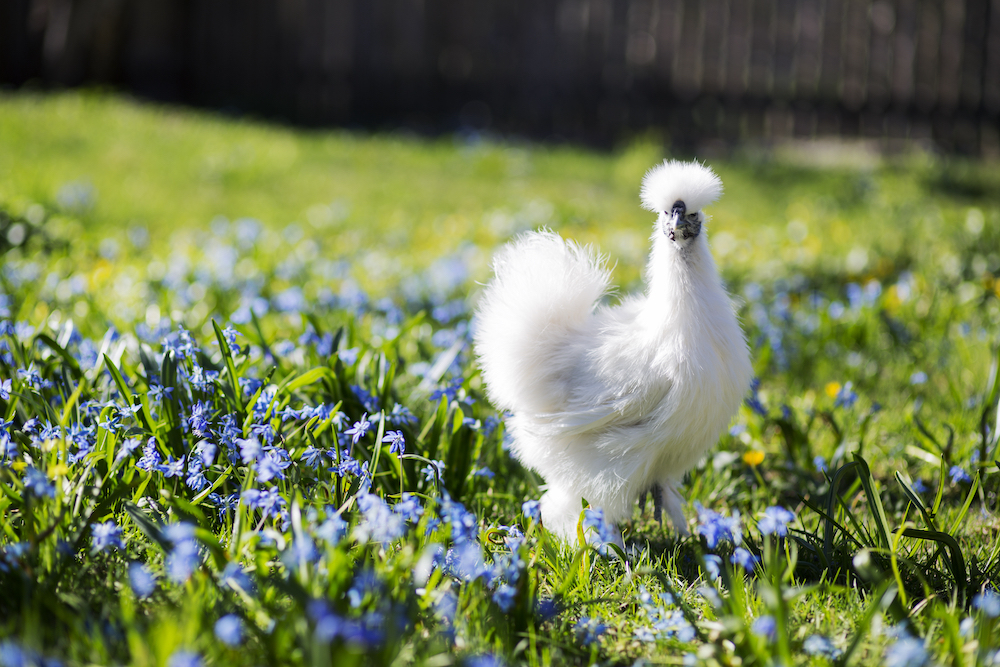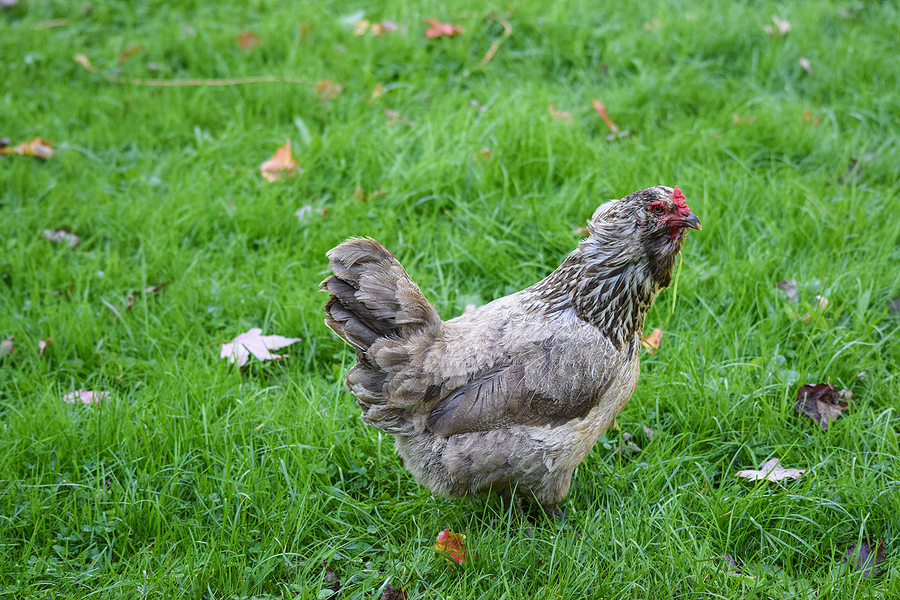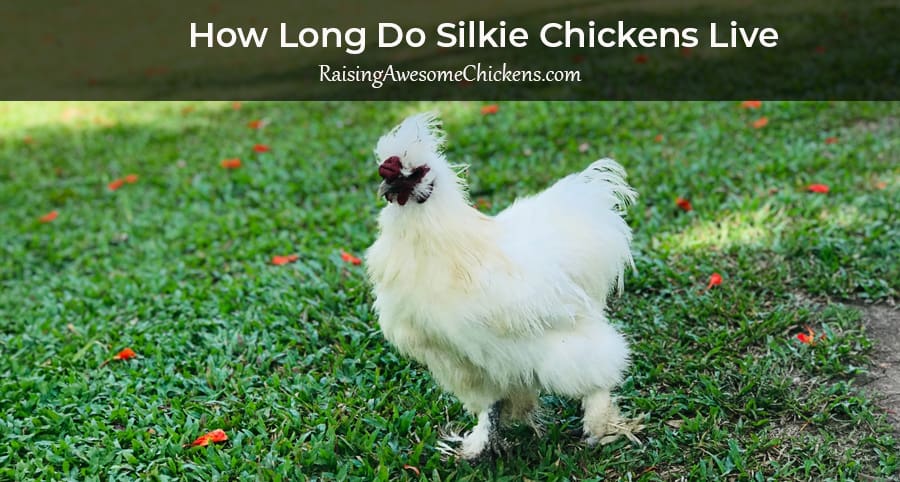Last Updated on February 16, 2024 by AwesomeChickens
Table of Contents
A Comprehensive Guide to Breeding and Care
The Sussex chicken is a distinct and venerated breed that hails from England, with a history that dates back to the Roman occupation of Britain. Renowned for its colorful plumage, gentle temperament, and dual-purpose utility, the Sussex has formed a cornerstone of the poultry industry and has been a long-standing favorite among chicken enthusiasts. This breed provides ample meat and lays a generous number of eggs, making it a versatile choice for backyard flocks and small-scale farmers alike.
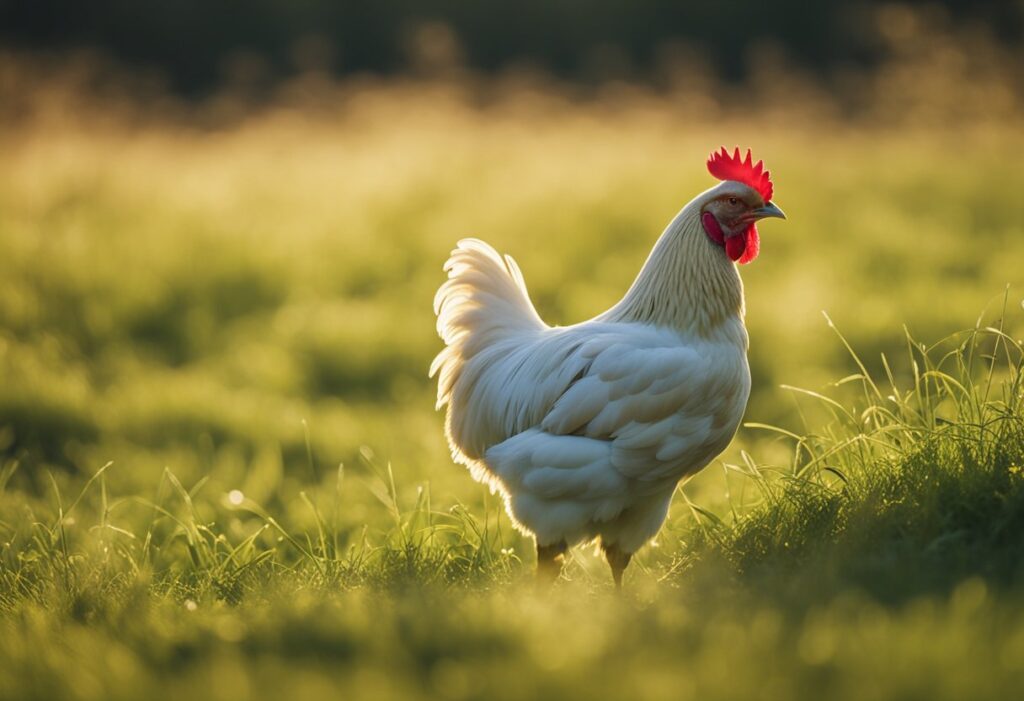
As one of the oldest chicken breeds, the Sussex has played a pivotal role in the development of other chicken varieties and has been influential in poultry breeding programs worldwide. Its resilience and adaptability to various climates also contribute to its popularity. Over time, the breed has been refined to enhance its desirable characteristics, such as its robust constitution and the quality of its meat and eggs.
In England, the Sussex chicken continues to symbolize the rich heritage of the country’s agricultural practices. The breed’s endearing qualities and enduring utility emphasize its significance within the realm of domestic livestock. Keeping Sussex chickens not only perpetuates a historic lineage but also supports sustainable agriculture by fostering genetic diversity within the avian population.
Origin and History
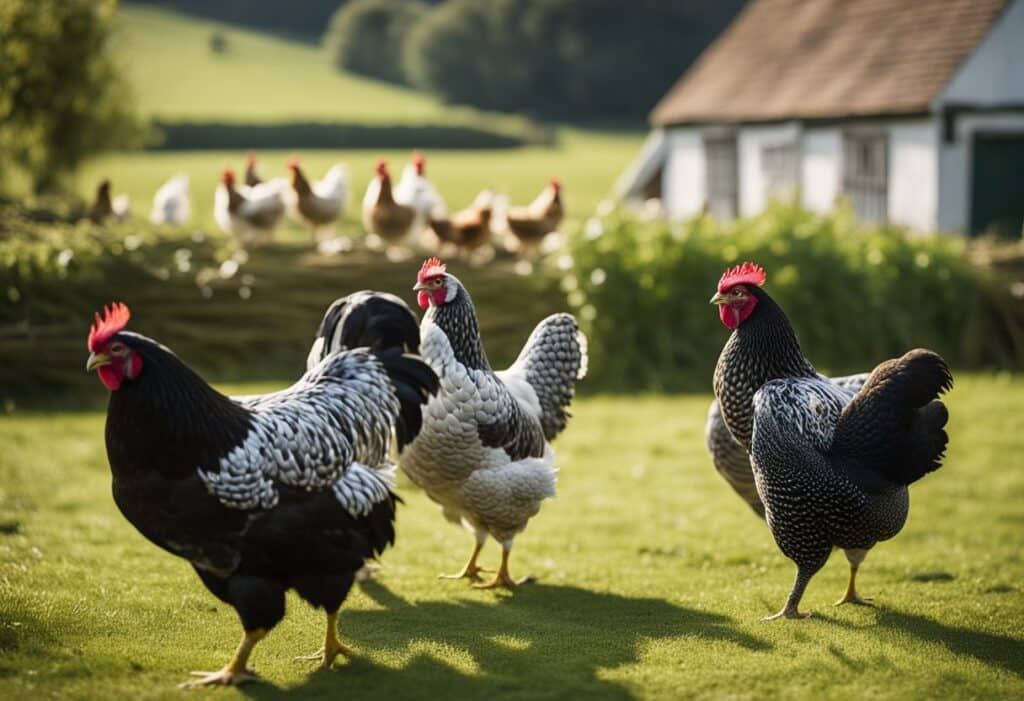
The Sussex chicken is a heritage breed, known for its contributions to poultry farming. Originating in England, this breed’s history is deeply intertwined with British agricultural development.
Breed History
The Sussex chicken’s roots trace back to the county of Sussex in England, where it was primarily developed. Historically, evidence suggests that Sussex chickens are descendants of the ancient Kentish Fowl, a breed known for its utility and meat quality. They have been a staple in English poultry farming for centuries, valued for both their eggs and table qualities.
Victorian Era
During the Victorian Era, Sussex chickens gained significant popularity. Breeding programs amplified their traits, leading to the refinement of the breed. Poultry shows, which became popular in this period, spurred interest in Sussex chickens, further cementing their status within British poultry breeds.
Edward VIII
The association of Sussex chickens with royalty was highlighted when Edward VIII, as the Prince of Wales, kept a flock of Sussex chickens. The royal endorsement during his tenure added prestige to the breed, reinforcing their importance in English history and heritage.
Physical Characteristics
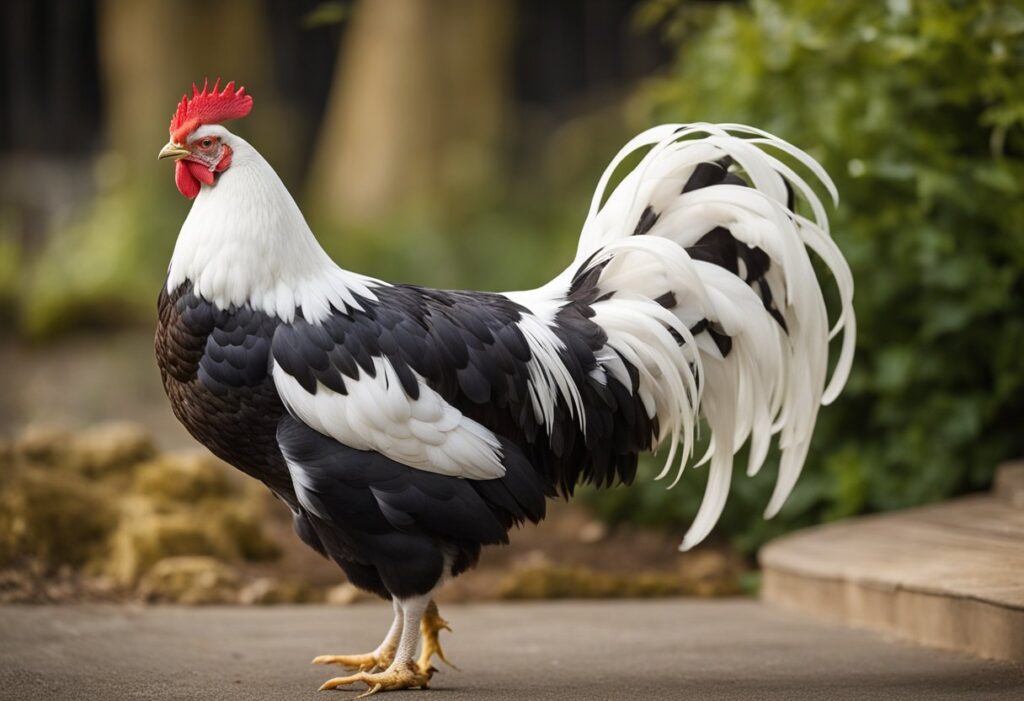
The Sussex chicken boasts a broad and deep body, indicative of its sturdy nature and appearance. The breed showcases a variety of color variations, distinct comb and wattles, and a notable size and weight that distinguish it from other poultry.
Color Varieties
Sussex chickens exhibit several color varieties, each with its unique pattern and hue. Primary colors include:
- Speckled: A white base with black speckles throughout the feathers.
- Red: A deep, rich red color that covers the entire body.
- White: Pure white feathers that give a clean and uniform look.
- Buff: A soft, golden-yellow hue that’s uniformly distributed.
Each color variety contributes to the Sussex chicken’s striking appearance, though the speckled variety is particularly lauded for its intricate feather patterning.
Comb and Wattles
Sussex chickens feature a single comb, which is upright and has five to seven evenly spaced points. Their wattles and earlobes are red, and both are of medium size, contributing to the breed’s classic chicken profile. The comb and wattles are bright and indicative of the chicken’s health status.
Size and Weight
The Sussex breed is known for its robust constitution. Standard weights are listed below:
| Class | Weight Range |
|---|---|
| Male (Cock) | 8.5 – 9.5 lb (3.9 – 4.3 kg) |
| Female (Hen) | 7.0 – 8.0 lb (3.2 – 3.6 kg) |
| Cockerel | 7.5 – 8.5 lb (3.4 – 3.9 kg) |
| Pullet | 6.0 – 7.0 lb (2.7 – 3.2 kg) |
These weights reflect the breed’s size and physical presence, making Sussex chickens both good foragers and suitable for meat production. The breed’s weight equally contributes to its appearance, presenting a commanding yet graceful stature.
Temperament and Behavior
The Sussex chicken exhibits a well-balanced temperament, characterized by its docility and propensity for human interaction. They are considered a low-maintenance breed, often content within the hierarchy of the flock.
Docility and Friendliness
Sussex chickens are known for their docile nature, often described as easy to handle and amenable to human presence. These birds typically display a friendly disposition, making them suitable for backyard flocks and family pets. Owners often report a positive experience in engaging with Sussex chickens due to their curious behavior, which further solidifies their reputation for approachability.
Foraging and Activity
In terms of activity, Sussex chickens are avid foragers, actively seeking out food throughout the day. This innate behavior emphasizes their ability to adapt to free-range conditions where they can utilize their foraging skills to supplement feed.
- Active behaviors include:
- Scouring for insects
- Pecking at vegetation
- Exploring their environment
The pecking order within a flock of Sussex chickens is typically well-established, reflecting the birds’ social structure. They adapt well to the hierarchy, maintaining a harmonious coop with minimal disputes. This trait further contributes to their classification as low-maintenance, requiring less intervention from keepers.
Care and Management
Proper care and management are crucial to ensuring the health and well-being of Sussex chickens. These chickens are known for being low maintenance and cold hardy, making them ideal for both experienced and novice backyard chicken keepers.
Housing and Space Requirements
Sussex chickens thrive when given ample space as they are an active breed. It’s recommended to provide a minimum of 4 square feet of coop space per Sussex chicken, to ensure they have enough room to roost comfortably.
- Outdoor Space: Ideally, each bird should have about 10 square feet of outdoor run area.
- Protection: Ensure the coop and run are well-protected from predators and extreme weather conditions.
- Ventilation: Adequate ventilation is essential to reduce moisture and prevent frostbite during colder months.
Health and Maintenance
Sussex chickens are robust with relatively few health issues, but routine health checks and maintenance are vital for their longevity.
- Nutrition: They have a propensity for obesity, so a balanced diet portioned appropriately is essential.
- Feed: Provide a constant supply of fresh water and a well-balanced chicken feed.
- Treats: Treats like vegetables and grains can be offered sparingly.
- Regular Checks: Monthly health checks for lice, mites, and other health concerns should be conducted.
- Vaccination and Deworming: Follow a regular vaccination schedule, and deworm as per veterinarian advice to prevent common health issues.
Breeding and Use
Sussex chickens are revered for their dual-purpose characteristics—providing substantial egg and meat production. The breed exhibits strong maternal traits, often displaying good mothering abilities and a tendency towards broodiness.
Egg Production Qualities
Sussex hens are known for their excellent egg production, typically laying 4 to 5 eggs per week. The eggs are renown for their cream to light brown color, appealing to poultry enthusiasts and commercial farmers alike. The hens start laying at about 16 to 20 weeks of age, supporting a sustainable egg production cycle.
- Average annual eggs: 250 to 300 eggs
- Start of lay: 16 to 20 weeks age
- Egg color: Cream to light brown
Meat Production Capabilities
The Sussex breed is equally esteemed for its meat production. These birds develop a broad, meaty carcass that is well-suited for table use. Their growth rate allows for relatively quick turnover for meat production, with birds reaching a good size by about 14 to 16 weeks of age.
- Meat production age: 14 to 16 weeks for a sizeable carcass
- Carcass quality: Broad and meaty
This breed’s dual-purpose nature makes it a valuable addition to farms looking for robust egg layers and chickens with favorable meat qualities. The Sussex’s broodiness is also beneficial for those interested in natural chick rearing.


